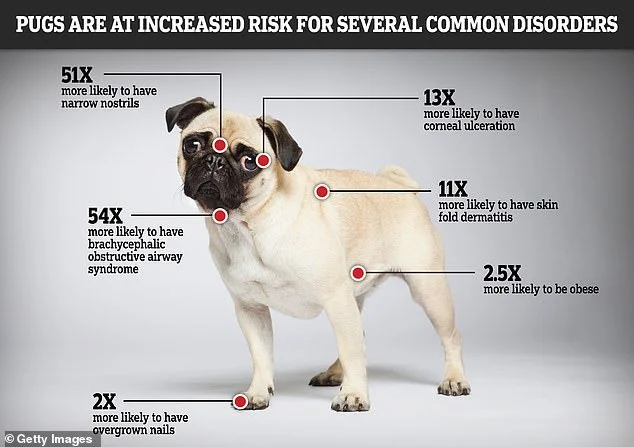Pet Blog > How to Care for a Brachycephalic Dog
How to Care for a Brachycephalic Dog
Although brachycephalic dogs might have similar temperaments as other dog breeds, their short muzzles can cause breathing problems that require special care. Knowing how to care for a brachycephalic dog can help in promoting its respiratory health by feeding it a balanced diet and exercising it moderately.
But, they’re so darn cute so let’s get started talking about them!
What is a Brachycephalic Dog?
Brachycephalic dogs, also referred to as flat-nosed, short-headed, or smush-faced dogs, have shortened bones of the skull, giving their noses and faces a pushed-in look. This makes their throat, and breathing passages flattened or undersized, causing difficulty in breathing.
As a result, dogs such as Boston Terriers, Pugs, and French Bulldogs suffer from brachycephalic airway syndrome, a health condition of the upper respiratory system. The common symptoms of this disease are stenotic nares, everted laryngeal saccules, hypoplastic trachea and elongated soft palate. If your dog is brachycephalic, the following tips help minimize the effects of the condition.
Weight Management
Keeping in mind that respiratory issues such as noisy breathing and snoring are linked to obesity in most dogs, weight plays a major role in the overall health of your brachycephalic dog.
Usually, accumulation of the adipose tissue in the throat can cause chronic stress on the larynx cartilage, which can result in laryngeal collapse, leading to death if no immediate medical intervention is sought.
It is, therefore, advisable to feed your brachycephalic dog a balanced diet with higher levels of protein content. Avoid foods with artificial preservatives or low-quality filler ingredients such as corn and soy. Incorporating natural supplements can also help suppress appetite, boost metabolism and promote weight loss.
Skin Care
The shortened skulls in brachycephalic dogs make them develop deep skin folds and facial wrinkles, which makes them prone to chronic itching and skin infection.
Regular check-ups and cleaning of these areas can help prevent skin problems such as pyometra, skin fold dermatitis, and skin infections. The best way to prevent this is to regularly clean the dog using a wet cloth to wipe away debris and grime from the skin folds.
Keep in mind that using wipes that contain chemicals to clean your dog can irritate its skin. Check out for signs of skin infections such as red or sore patches, unusual odor, or pus. It's advisable to seek the help of a vet once you notice these signs instead of cleaning the dog the usual way.
Moderate Exercises
Generally, exercise helps to boost your dog's metabolism, helping it remain physically fit. Keeping in mind that these dogs’ have problems breathing, too strenuous exercise can put your dog at a higher risk of fainting or collapsing.
As a result, it's advisable to engage brachycephalic dogs in moderate exercises, such as gentle-paced walks, and take breaks in between so that the dog can rest and cool down. Typically, even if the dog might seem active, like other dog breeds, avoid engaging it in high-endurance activities such as hikes and long runs.
Although some brachycephalic dogs might have hunting instincts that might make them curious and territorial, requiring a leash when outdoors, avoid using a neck collar during exercises to eliminate neck pressure. Instead, use a harness to allow the dog to breathe with ease.
Source: https://www.techregister.co.uk
Dental Care
The shortened muzzle of brachycephalic dogs makes them have overcrowded and misaligned teeth, which increases their risk of plaque buildup and periodontal diseases. Typically, periodontal disease is an infection of the tissues and gums around the teeth, which usually results in tooth loss if untreated.
It's, therefore, advisable to clean your dog's teeth daily using dog toothpaste. You can also use natural and organic toothpaste made from grade coconut oil.
Generally, coconut oil has medium-chain fatty acids that have antifungal, antibacterial, antimicrobial, and antiviral properties ideal for maintaining the dog's oral health. You can also visit your vet for dental checkups. This allows early diagnosis and treatment of any serious dental issue.
Hot Weather Precautions
Generally, many dog breeds regulate their body temperature in hot weather through panting. On the other hand, Brachycephalic dogs cannot pant efficiently due to their upper airway abnormalities, which increases their risk of heat strokes.
As a result, consider scheduling the walks early in the morning or late in the evening or even keep your brachycephalic dog indoors during hot weather to protect it from excessive heat.
Provide your dog with sufficient fresh drinking water to keep it hydrated and reduce the risks of heatstroke. You can also monitor for any signs of heatstroke or heat exhaustion, such as rapid heartbeat, excessive thirst, heavy panting, or extreme lethargy.
Surgery
Typically, most dogs are diagnosed with brachycephalic syndrome at the age of one to four years. Regardless of the dog's sex or breed, the following signs indicate a brachycephalic health condition.
Vomiting and lack of appetite
Loud snoring
Regurgitation
Exercise intolerance
Coughing
The condition is serious and needs immediate medical intervention when you notice the above signs. Although medical treatment cannot correct anatomical abnormalities of this condition, a vet can perform a surgical procedure to help control breathing difficulties in the following ways.
● Stenotic nares surgery can help reshape the nostrils and create a large opening for easier breathing
● Staphylectomy or soft palate resection using scissors, a scalpel blade, or a CO2 laser can help prevent blockage of the airway at the back of the throat, improving your dog's ease of breathing.
Frequently Asked Questions
Can a Brachycephalic Dog Swim?
Although brachycephalic dogs can swim, their short snouts can easily get wet. Usually, this obstructs the air passage, increasing the risk of drowning. Paddling is also a rigorous activity that requires bursts of energy and can cause heavy panting in brachycephalic dogs.
How Do I Take Care of My Brachycephalic Dog When Traveling?
When traveling, it is advisable to place your brachycephalic dog on a spacious and well-ventilated travel carrier to allow it access to fresh air at room temperature. You can also get an airline-approved soft carrier if taking a flight.
Final Thoughts
Learning how to care for a brachycephalic dog helps you understand its nutrition, exercise, and grooming requirements. You can care for a brachycephalic dog by managing its weight, engaging it in less strenuous exercises, brushing its teeth regularly, or even taking it for surgical treatments to correct anatomical abnormalities.
Article by Makayla Connors
Check out our other Dog Blog articles
Return to the Pet Crowdfunding Blog


